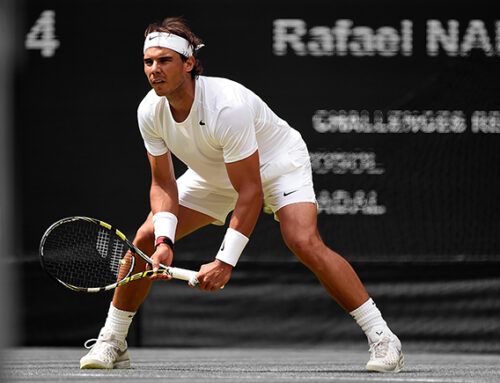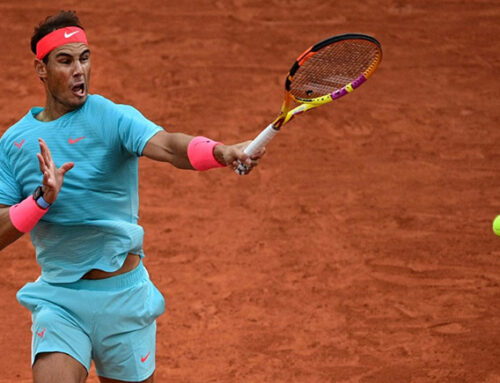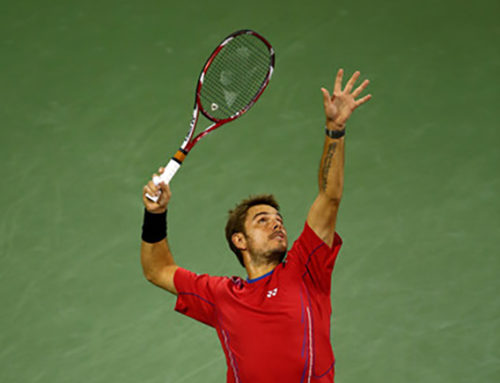Introduction
For all that one-handed backhands are often admired for their beauty and grace on the tennis court, they have persisted at the peak of the game for one simple reason: they work. One handed backhands are capable of higher peak levels of spin and velocity than two-handed backhands. That is not to say they are superior in every regard but this one aspect is, at this juncture, beyond debate.
Modern groundstrokes are rotational, and the amount of energy available to put into the ball is limited by the speed of the racquet at contact. When we refer to “power” in a groundstroke, we’re often really referring to racquet head speed. There are many common misunderstandings about power as it relates to modern groundstrokes. At least one of these misconceptions is very apparent in the one-handed backhand.
The idea that power comes from the ‘back’ leg in groundstrokes is widespread. The “load and explode” doctrine of teaching proliferated in the tennis world amongst coaches and students, and lingers in various forms to this day. The problem is that it isn’t a particularly effective source of power. It’s not what the top professional players in the world actually do when they play.
We can see this by examining the two most powerful backhands in the game today: Dominic Thiem, and Stanislas Wawrinka. By looking at the motor patterns of their legs and hips during the backhand we will see that the back leg isn’t the source of power driving the hips into rotation.
To begin with we will look at the backhand of Wawrinka. Stanislas has long been renowned for having the biggest backhand in the game. His ability to hit toe-to-toe with Rafael Nadal’s forehand with his one-handed backhand has made him both a legend, and a three-time slam champion. So what does Stan do on his backhand?
Wawrinka
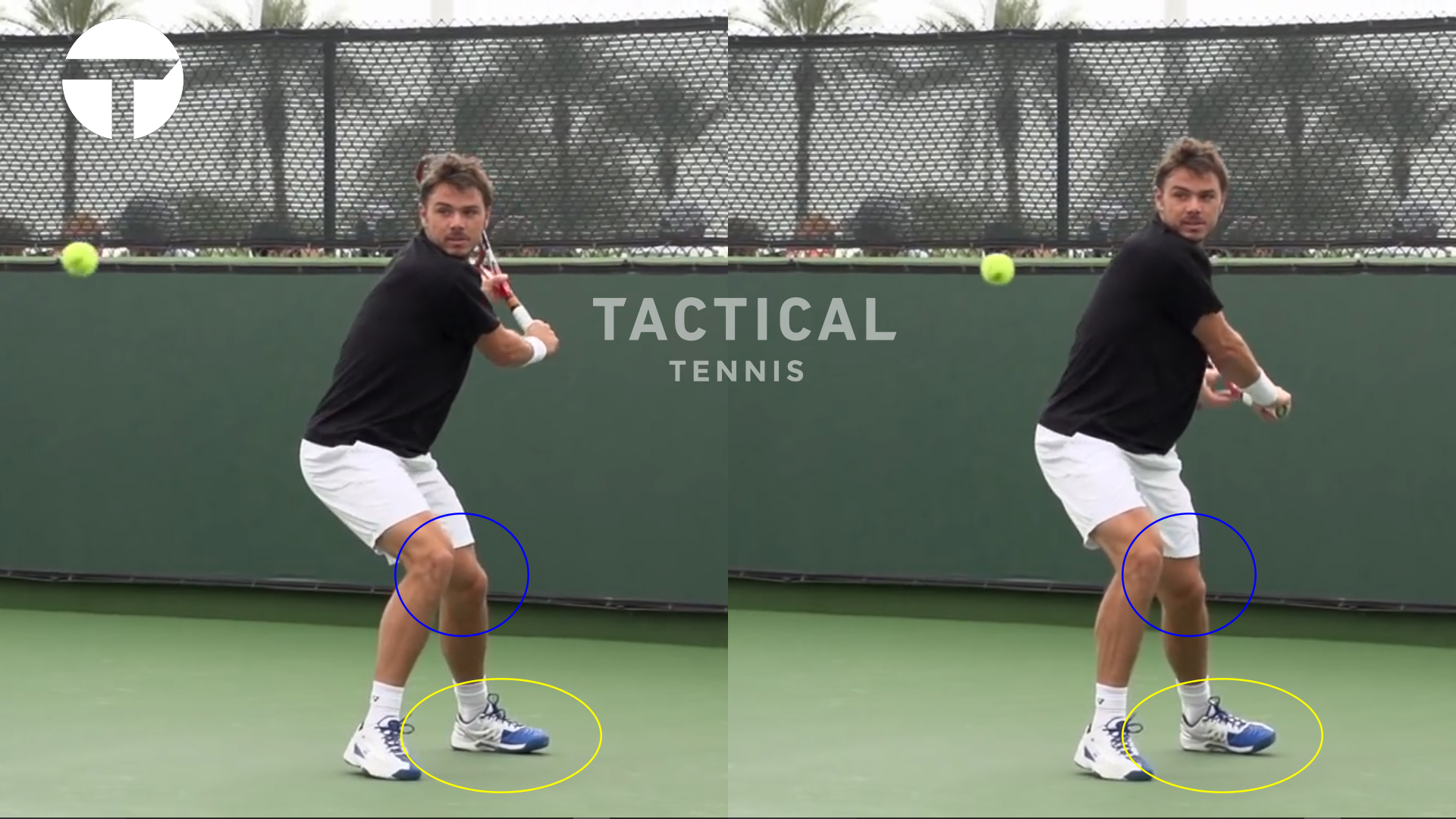
Let’s start by taking a look at the back leg of Wawrinka during the explosive phases of his stroke. Remember we are beginning with the idea that players drive off their back leg in order to generate power. There are two key pieces to examine in the image above, both circled in different colors.
In the left side of the image we see Stanislas as he is about to begin to truly accelerate his racquet. In the fractions of a second that follow, his racquet will drop, and then explode forward to the point of contact. As we look at the position of his left leg, we see that he is not well set up to exert force or power from it. His left leg is almost straight, and he only has a portion of his left foot in contact with the ground.
As he transitions to the position on the right of the image, his leg has straightened ever-so-slightly. Wawrinka’s left foot is even less in contact with the ground now, with the outside edge clearly lifted up.
Nothing about these positions suggest Wawrinka is using his left leg as a source of power. He is not driving off his left leg to accelerate the hips or the racquet. Rather, we see that his weight has shifted almost entirely onto his lead (right) leg before beginning the true acceleration of the racquet. If the intent was to drive off the rear leg for power, Wawrinka would need to have a significant portion of his weight on that rear leg – instead it is on the front leg.
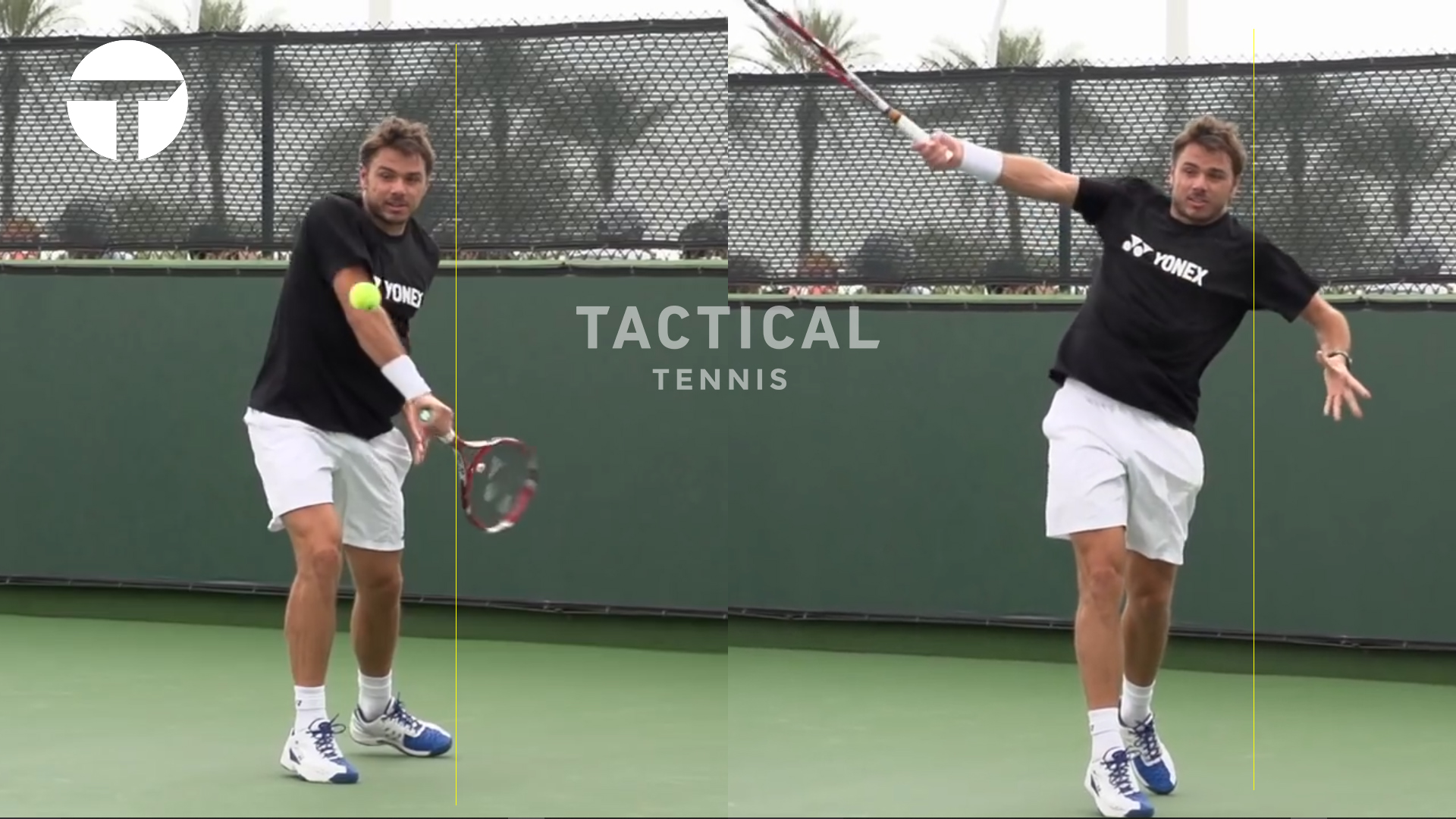
As Wawrinka completes his acceleration through the ball his left leg continues to tell us a lot. His hips structure is rotating and his left hip is coming forward, but his left leg is now swinging backwards behind him – in the opposite direction of his left hip.
If Wawrinka were using the left leg to drive the left hip up, the opposite would be true. Stan’s left leg would move up and through together with the hip, not move in the opposite direction. If you doubt this for a second, stand up and push your left hip forward with your left leg. Then try to do it while sending your left leg backwards. It just doesn’t work properly.
Thiem Time
Let’s shift over to examine Dominic Thiem’s mechanics.
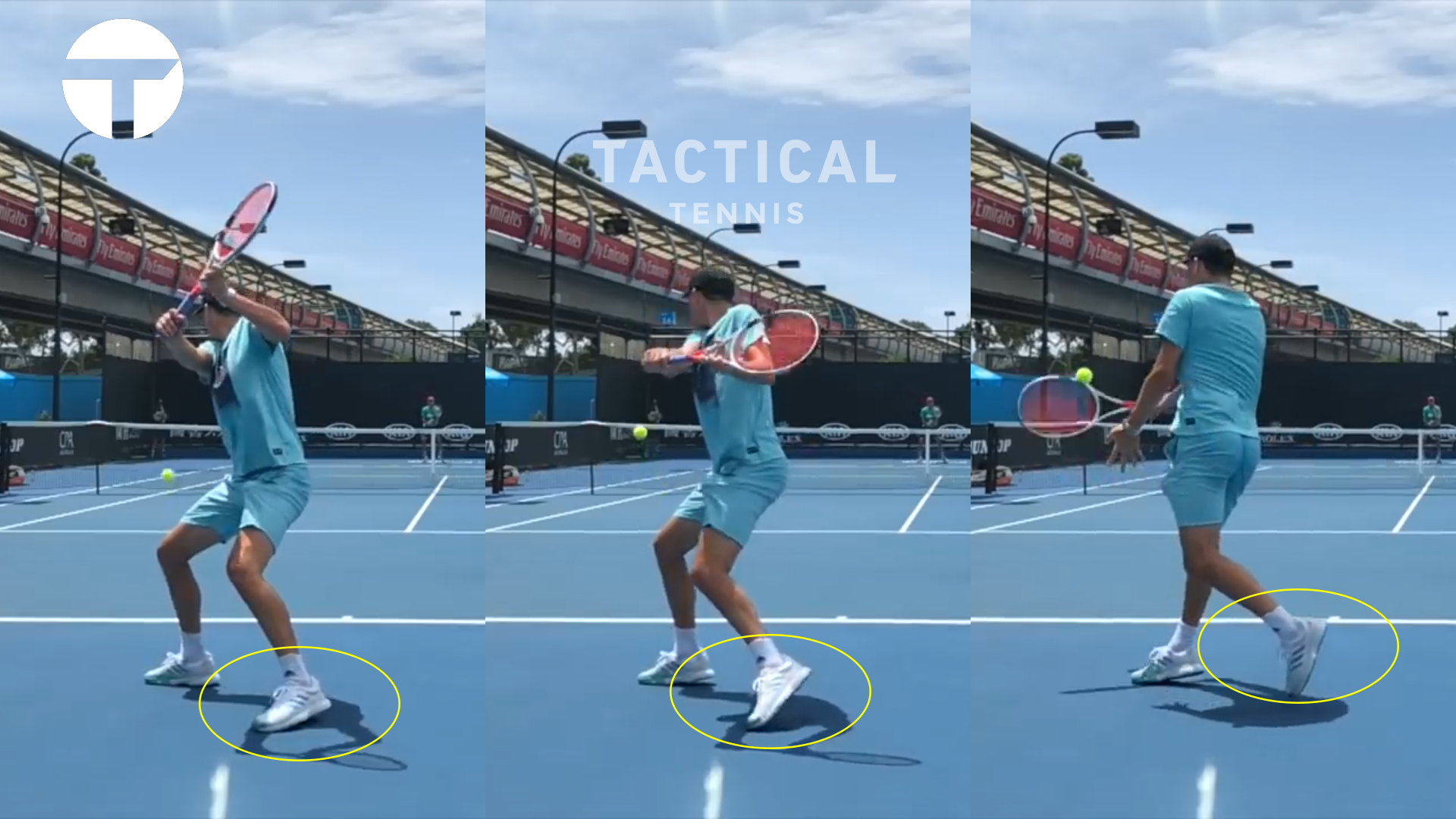
Examining Thiem’s rear leg in his backhand, we see again a pattern of movement that shows he is not driving off his back foot to accelerate his rear hip into the shot. Look at the progression of his foot position in these three images. This is not the position of someone using their foot for power.
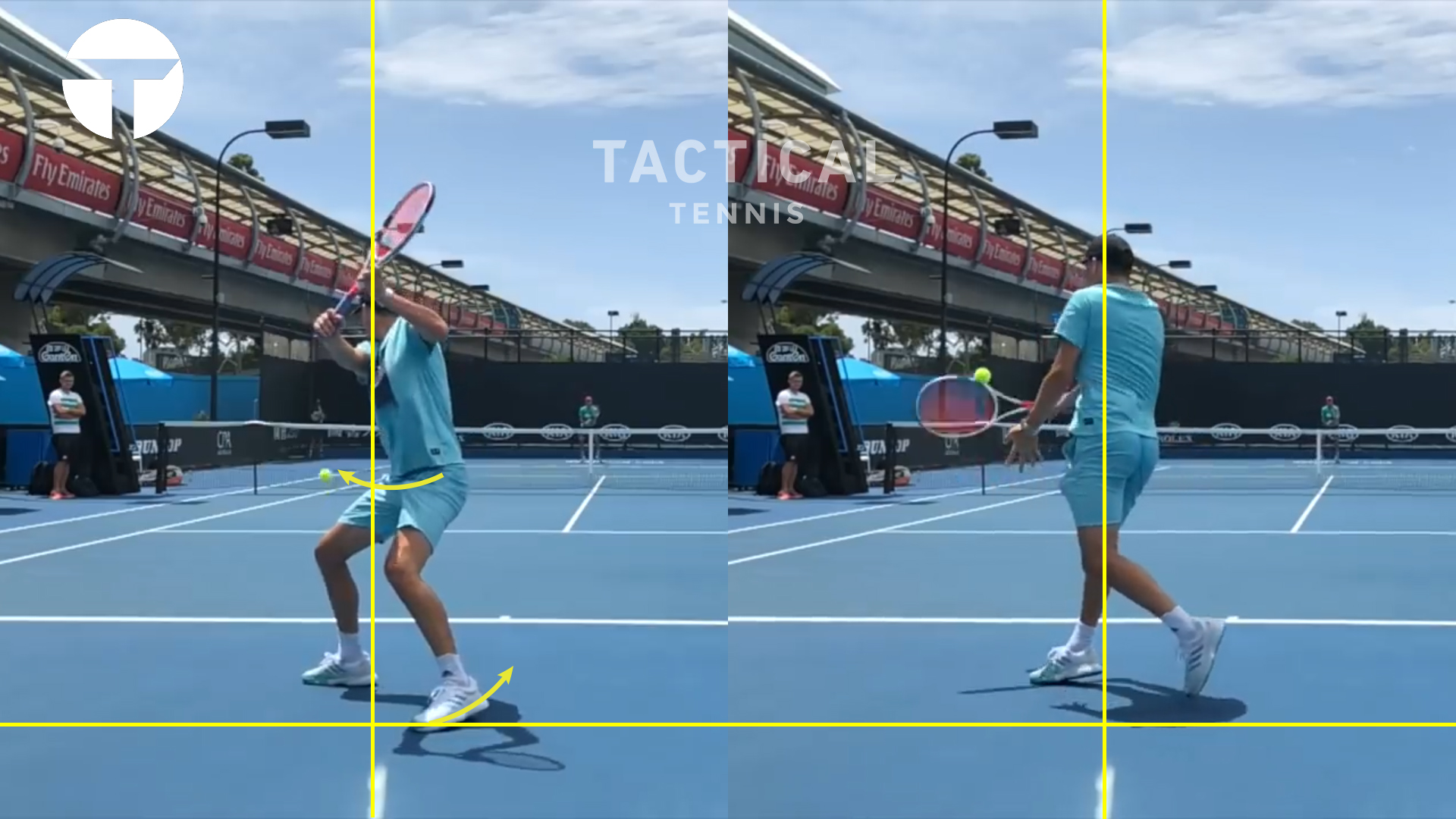
Additionally we can see in the imagery above that while Thiem’s rear (left) hip rotates around to the left, his rear (left) foot rotates in the opposite direction, to the right. This confirms again that he is not driving the left hip forward with the left leg. If he were, the left foot would travel in the same direction as the left hip.
Why Not?
Now that we’ve seen that the most powerful one-handed backhands in the world aren’t pushing off their rear leg for power, we should ask (if we haven’t already) “why not?”
After all, it isn’t good practice to just copy professional players without understanding – even the best players have inefficiencies or problematic movements patterns. In this case, the lack of rear-leg drive isn’t a peculiarity limited to one player – it’s something we see across the best backhands in the world.
The simple answer, and in this case the correct one, is that pushing off the rear leg to provide power for rotation simply doesn’t work well. It’s a poor way to initiate rapid rotation of the hip structure because, compared to other methods, it’s slow – and slow hips mean a slow racquet.
Now What?
If the rotation in these backhands is not being driven by pushing off the rear leg, what is driving it? There’s better ways to rotate the hip structure more quickly, and that’s what we’ll look at next time, in Part 2.
*Images thanks to video from Slow Motion Tennis and Pro Tennis Photos

